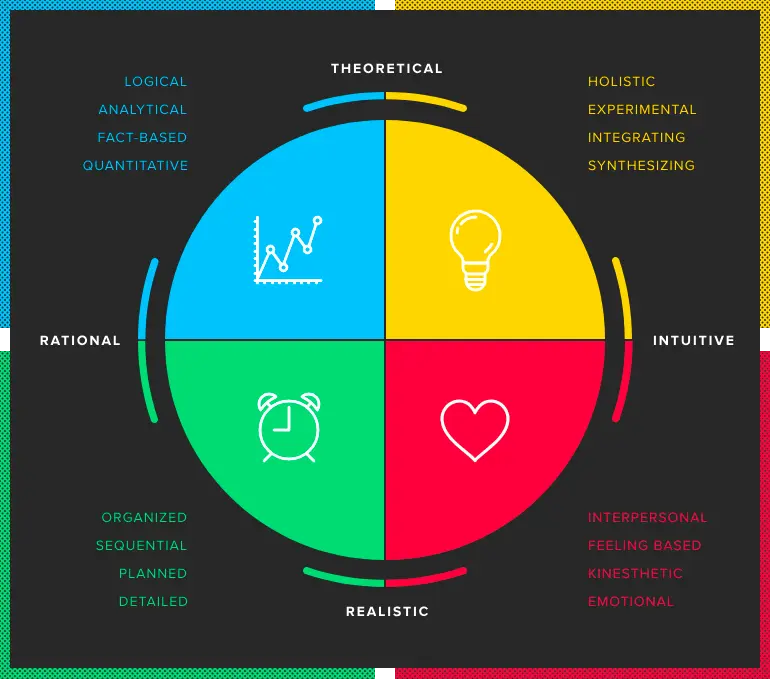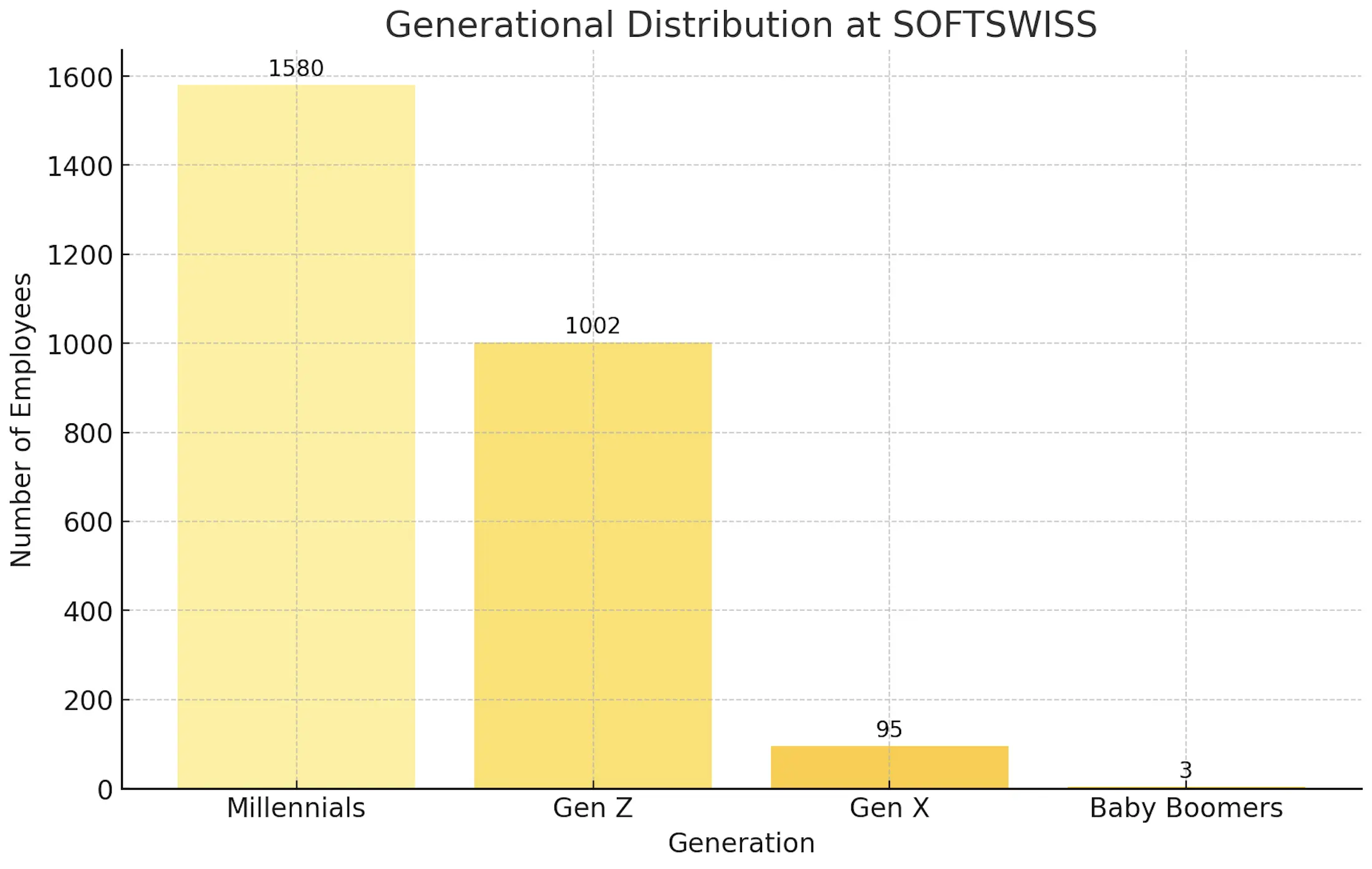‘Mind the gap’ is not only a crucial reminder for the London Tube but also essential when hiring a diverse workforce. It is important to remember that potential employees from different generations may perceive job roles differently.
In this article, Anuka Surmanidze, HR Business Partner at SOFTSWISS Managed Services, explores how cognitive diversity can enhance our understanding of the work preferences of Generation Z and Millennials. Together, these groups are expected to comprise about 58% of the adult population by 2030 as more teenagers reach adulthood.
What is Cognitive Diversity?
Cognitive diversity refers to the differences in how people think, process information, and approach problem-solving. It highlights the unique cognitive styles and mental perspectives each team member brings.
When people approach problems from diverse perspectives, they are more likely to develop innovative and effective solutions. Collaboration among individuals with varied cognitive styles introduces fresh ideas and concepts, leading to groundbreaking innovations and improved productivity. This diversity in problem-solving strategies means that the team is more likely to identify effective solutions and do it more quickly.
Ned Herrmann’s Whole Brain® Thinking
Ned Herrmann’s Whole Brain® Thinking framework focuses on understanding and leveraging different thinking preferences and cognitive styles within teams. Herrmann’s model is based on the idea that people have four distinct thinking styles, represented by different quadrants of the brain, and that understanding and utilising these styles can lead to improved problem-solving, communication, and overall performance.

- Analytical Thinking (A Quadrant): This style, associated with the left hemisphere of the brain, is characterised by logical, rational, and fact-based thinking. People who prefer this style are detailed and systematic and enjoy analysing data to solve problems methodically.
- Practical Thinking (B Quadrant): This style is linked to sensible and realistic thinking. Individuals with this style prioritise organising tasks, planning, and ensuring efficient execution. They are often goal-oriented and results-driven.
- Relational Thinking (C Quadrant): This style emphasises social and emotional intelligence. Individuals who prefer relational thinking are empathetic, sensitive to others’ feelings, and excel in building relationships and teamwork.
- Innovative Thinking (D Quadrant): This style is associated with creativity and big-picture thinking. It is prevalent in individuals who enjoy exploring new ideas and thrive in dynamic, innovative settings.
Incorporating the Whole Brain® Thinking model into your approach to cognitive diversity helps you recognise and value the diverse thinking styles within your teams. By appreciating each cognitive preference, you can improve problem-solving and foster innovation.
Generational Cognitive Diversity
The term ‘diversity’ has evolved in meaning and significance across generations. When discussing how different generations perceive diversity, it is crucial to acknowledge the shifts in perspectives and their effects on societal and workplace dynamics.
“Everyone you will ever meet knows something you don’t!” – Bill Nye
Generational diversity highlights the differences in attitudes, behaviours, values, and expectations among people of different age groups. Distinct generations may approach life, work, and societal issues differently due to the unique experiences and events that shaped their formative years.
Baby Boomers (1946–1964)
In the workplace, Baby Boomers witnessed the emergence of diversity initiatives in response to an evolving workforce. Companies began addressing gender imbalances and promoting equal opportunities, which broadened their understanding of diversity.
Generation X (1965–1980)
Gen Xers sought flexibility in work schedules and recognition of individual work-life balance. This shift led to expanding diversity initiatives to include varied work arrangements.
Millennials (1981–1996)
Millennials have significantly shaped the conversation around diversity by emphasising inclusivity and intersectionality. They advocate for a comprehensive approach to diversity that includes race, gender, sexuality, and disability, leading to more robust diversity and inclusion programs in the workplace.

For example, at SOFTSWISS, where the workforce predominantly consists of millennials – with the average age of managers at 33 and employees at 30 – these values are likely reflected in the company’s values and culture.
Furthermore, millennials, who have spent countless hours playing games like Super Mario, are accustomed to receiving immediate feedback. In the game, completing a level rewards players with points, extra lives, or power-ups. This instant gratification provides a sense of accomplishment and encourages continued play. Understanding this preference for immediate feedback can be crucial for effectively communicating with this generation.
Generation Z (1997–2012)
Growing up in an age of hyperconnectivity, Gen Z engages with diverse perspectives, cultures, and experiences online. Their understanding of diversity is influenced by their status as digital natives. They have grown up with technology at their fingertips and possess a strong entrepreneurial spirit. Raised in a digital age, they are excellent multitaskers known for adapting quickly to new digital platforms and technologies.
Knowing it all, diversity is not just about nationality; it encompasses a rich tapestry of thought, skills, and experiences. It is crucial to recognise that only some do things the same way, which is fine! In turn, we should appreciate these outstanding differences and be fascinated rather than frustrated. Do not see differences as difficult to understand; see them as opportunities to learn and grow.
